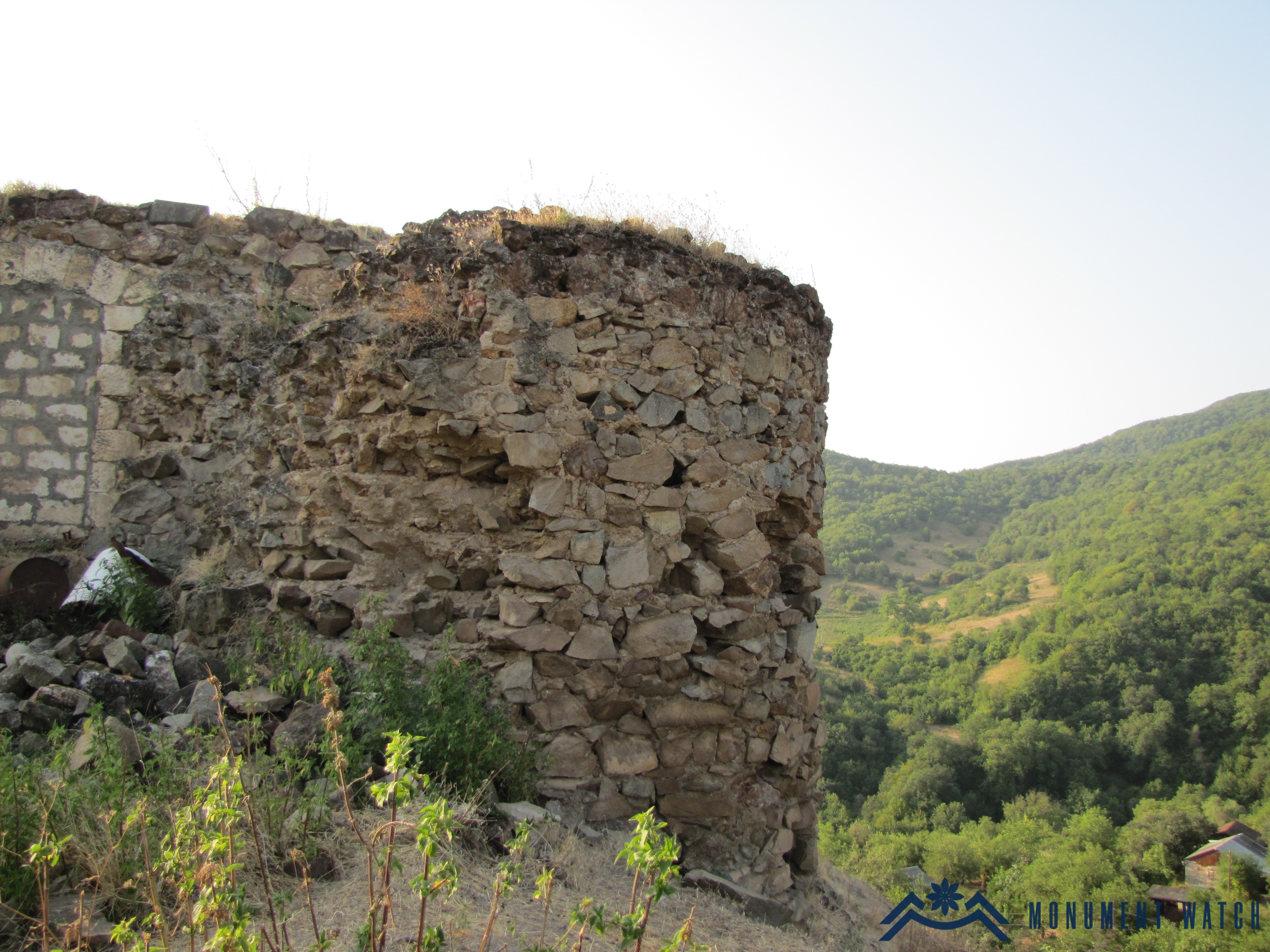The fortified mansion of the Melik-Alaverdyans at Gyulatagh-Vardadzor
Location
The Melik-Alaverdyan fortress complex is located in the village of Gyulatagh in the Martakert District of the Republic of Artsakh. It was initially founded upon the rocky summit of a hill. Today, only fragments of the complex survive, having been incorporated into the walls of a school building constructed in the mid-20th century. The site is currently under Azerbaijani occupation (Fig. 1).
Brief Historical Overview
Historical data concerning the complex are scarce. It was seen in a more intact and flourishing state, described by Raffi (1987, pp. 283–284) and by M. Barkhudaryants. At that time, on its northern wall, there remained a construction inscription dated to 1799, which Barkhudaryants transcribed and published as: "This is of Melik Arushan, year 1799". The same author further reports that the complex's builder, Melik Arushan, was the appointed melik of Jraberd and the son of Alaverdy, the yuzbashi of Gyulatagh (Barkhudaryants 1907, 120).
Architectural-compositional examination
The mansion occupies the plateau‐like summit of the aforementioned hill, its perimeter defined by curtain walls. The plan presents as an east–west–oriented rectangle reinforced at each corner by drum‐shaped flanking towers (Fig. 2). The mid‐20th-century school construction encroached upon the original fabric, partially disrupting the plan.
The two southern towers, which rise to a height of approximately 3.0 m (Fig. 3), are relatively intact. The western of these once featured a domed vault, traces of which still survive. On the northern side, only the lowermost portions of the towers remain, and the western half of the curtain wall was demolished to create an entrance for the school.
Despite its overall poor preservation, the complex's pronounced defensive character is evident: the masonry walls are of substantial thickness, and the towers are notably prominent in proportion to the overall enclosure (external diameter 4.8 m). These defensive features explain why the site is commonly called the Melik-Alaverdyan fortress rather than merely a mansion
Unfortunately, the complex's internal buildings have also fallen into ruin. Both Barkhudaryants and Raffi recorded their original layouts. Barkhudaryants reported five chambers, of which two remained standing at his visit and three were half-collapsed (Barkhudaryants 1895, p. 215). According to Raffi, as late as the end of the 19th century, several barrel-vaulted rooms still stood and were inhabited by Melik-Alaverdyan family members (Raffi 1987, pp. 283–284).
Synthesizing these accounts with the surviving footprint and considering the formal parallels of contemporary melik residences, A. Ghulian proposed a reconstructed floor plan (Fig. 4) showing internal additions abutting the eastern and western curtain walls. On the west side were two rooms, and on the east side three. Each room was covered by a barrel vault and opened onto an antechamber or portico that provided access to the central courtyard. The chambers featured wall niches and fireplaces, and their windows faced inward toward the courtyard.
The masonry is composed of roughly dressed stones set in lime mortar (Fig. 5). Such spatial arrangements are characteristic of mid-18th to early-19th-century melik Mansions (Monument Watch).
Bobliography
- Barkhutareants 1895 - Makar Bishop Barkhudaryants, Artsakh, Aror Press, Baku.
- Barkhutareants 1907 - Makar Bishop Barkhudaryants, History of Aghuand, vol. B, Tiflis.
- Ghulian 2001 - A. Ghulian, The Melik Fortresses of Artsakh and Syunik, Publishing House of the National Academy of Sciences of the Republic of Armenia, Yerevan.
- Raffi 1987 - Raffi, Collected Works, vol. 9 (Two Months in the Lands of Aghuand and Syunik: The Khamsa Melikdoms), Yerevan.
- https://monumentwatch.org/hy/monument/%d6%84%d5%a1%d5%b2%d5%a1%d6%84%d5%a1%d5%bf%d5%a5%d5%b2-%d5%a2%d5%a5%d6%80%d5%a4%d5%a1%d5%be%d5%a1%d5%b6%d5%ab-%d5%b4%d5%a5%d5%ac%d5%ab%d6%84%d5%a1%d5%af%d5%a1%d5%b6-%d5%a1%d5%ba%d5%a1%d6%80%d5%a1/
The fortified mansion of the Melik-Alaverdyans at Gyulatagh-Vardadzor
Artsakh




